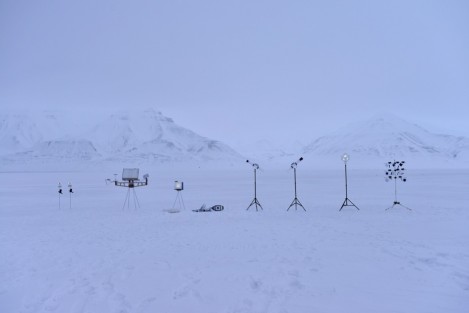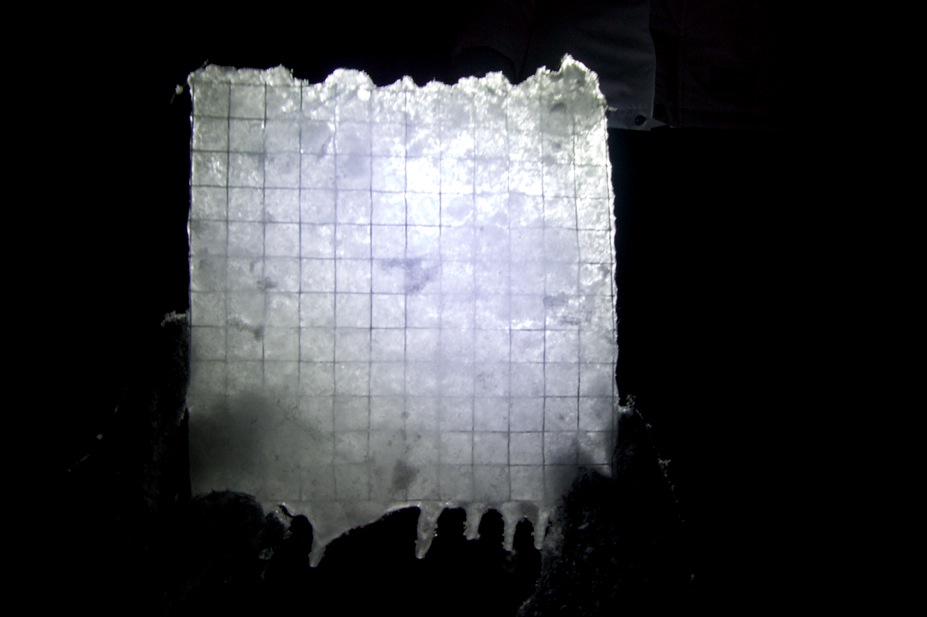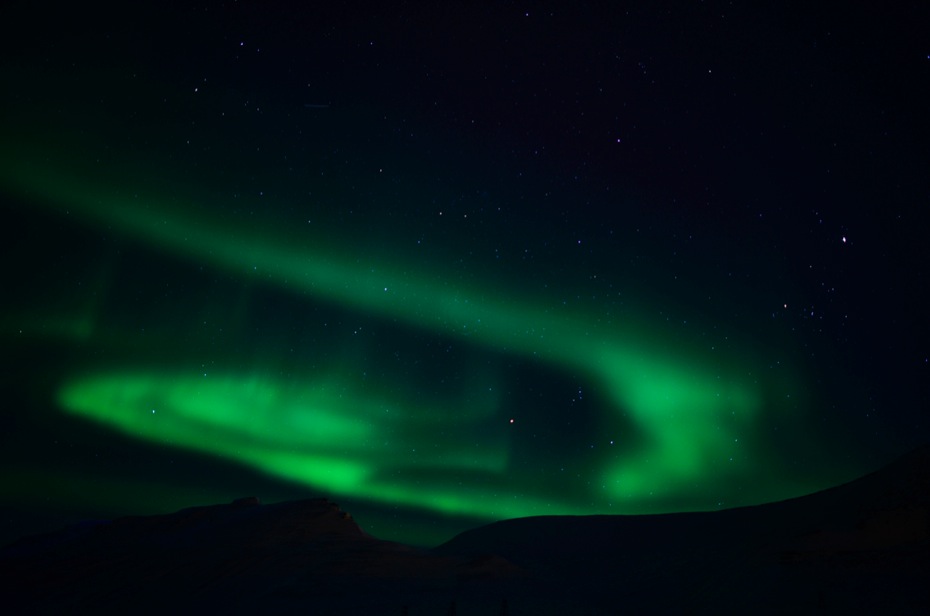Finally back from the seven day expedition and research in Svalbard, where we received lectures by the municipality on Longyearbyen’s past and present , by LPO architects to understand the challenges of building on frozen (and now slowly melting) tundra, by UNIS, the university centre in Svalbard on the researchers community in the archipelago, and by the scientists running EISCAT, two large radio telescopes studying the Northern Lights. We also ventured into the frozen landscape to Barentsburg, a soviet era mining town, still active and with 300 inhabitants and to the depths of glaciers to see ice cave formations produced by melting tundra.
All the while, we tested and probed the surroundings with surveying equipment designed and built for the expedition, at urban and natural landscapes, from -30 degrees Celsius to overcast blackout weather. Below is a selection of images from the research which will now allow the students to define an architectural brief for a building design, that will tackle some of the challenges they have reserached.
A special thanks to the Norwegian Embassy in Stockholm for their funding, to Canada Goose for the winter gear and to FLIS systems for the loan of the amazing infrared camera.
And in Svalbard, thanks to Vigdis Hole from Lokalstyre, for the wonderful lecture, to Eva Therese Jenssen from UNIS, for her time, for the lecture and the great guided visit to the University. To Ingvild Sæbu from LPO architects, for her time and introduction to the challenges of building in Longyearbyen and to Halvard Boholm for his dedication and fantastic presentation of the work at the EISCAT observatory. Last but not least, to Trond, at Guesthouse 102, for his patience and help during our stay, to Berit for her help, soup and cake on those -30 degrees days at Tom’s Lodge, and to Theres and Kristin at Base Camp for their patience during the amazing dog sled trip to the ice caves.

Arctic Audio Device
Milja Lindberg and Liina Pikk
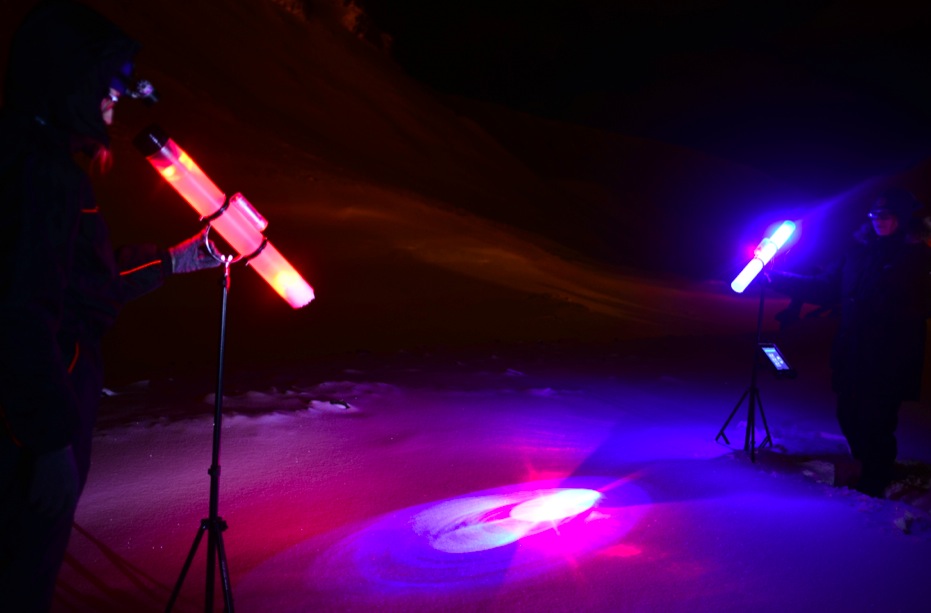

Our surveying device is used for testing sound absorption properties of snow by transmitting sound onto snow and reflecting it to a receiver. The device consists of three parts. A blue transmitter tube (Ø 60mm) sends focused sound frequencies through a speaker fitted at one end of the tube. A red receiver tube 20mm wider in diameter picks up sound waves reflected from the snow test bed. Both tubes are connected to tripods with an angle adjuster that works as a protractor to set the right angle. This piece also connects two lasers on top of the tubes. The lasers meet in the middle of the snow test bed. From this spot a sample of snow is taken with a test tube and placed onto a photolab. Together with a picture of the snow sample the following information about the testing conditions is recorded: date, time, temperature of air and snow, site coordinates, name of the recording and snow depth. The transmitted and recorded sounds are then compared and analysed together with the testing conditions.
Heat Loss Studies and Capture
Evelyn Osvath




Being exposed to extreme cold climate conditions in Svalbard I was interested in engaging with the opposite: the heat. Housings in Longyearbyen are built on pillars to avoid damage of the permafrost due to heat radiation. My main focus was put more on construction details. This includes the existence and detection of heat bridges as inevitable part of it. Due to the fact that these buildings were mostly built quickly at that time for temporary purposes you can be sure to find excessive heat dissipation.
Being sponsored by FLIR and endowed with an infrared camera previous thoughts were confirmed. Inhabitants even use mylar to cover windows from heat losses.
Based on this my interest of research is to take advantage of that, in a way of tapping into heat dissipation and use it as a new energy resource in the cold environment of Svalbard.
My device functions as a micro greenhouse with cress seeds to grow in. A tube will be attached e.g. on a window and a ventilator sucks in the heat inside the greenhouse which is covered with foam and mylar to provide good insulation in the cold.
My research and analysis allows to take advantage of existing and unavoidable heat dissipation and to engage in a new way of growing plants year-round and even in a cold climate.
Light Beacon Studies
Marta Nestorov
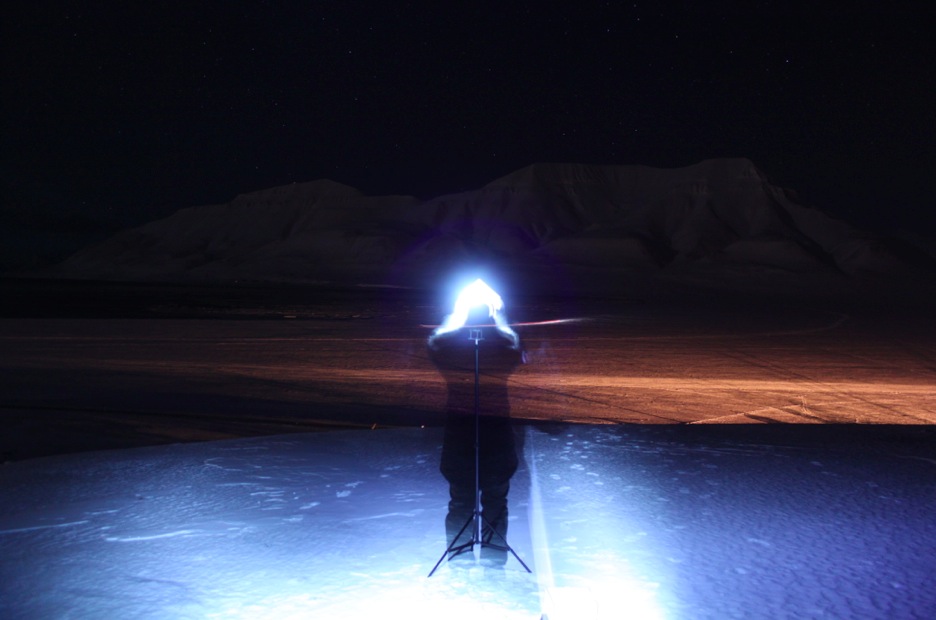



A device to facilitate the process of recording the changes of light – to follow the different conditions with the help of an artificial light source, a beacon, and a camera. To study how direct light, reflected light and bounced light might work in varying environments, weather conditions, and times of day and night. To create a spectrum of how the light is perceived depending on where you look, or the different surfaces and areas in a specific space – from afar to up close, the changes in snow, ice and other elements. How the wildly different landscape and climate influence how the natural light is seen, with a correlation to an artificial light- and reflective source. To inspire and create a collection of the intensities and range of colours, as well as the relation between an artefact and the environment itself.
Ice Tiles; a study on Insulation Properties and Light Transmission
Daniela Miller

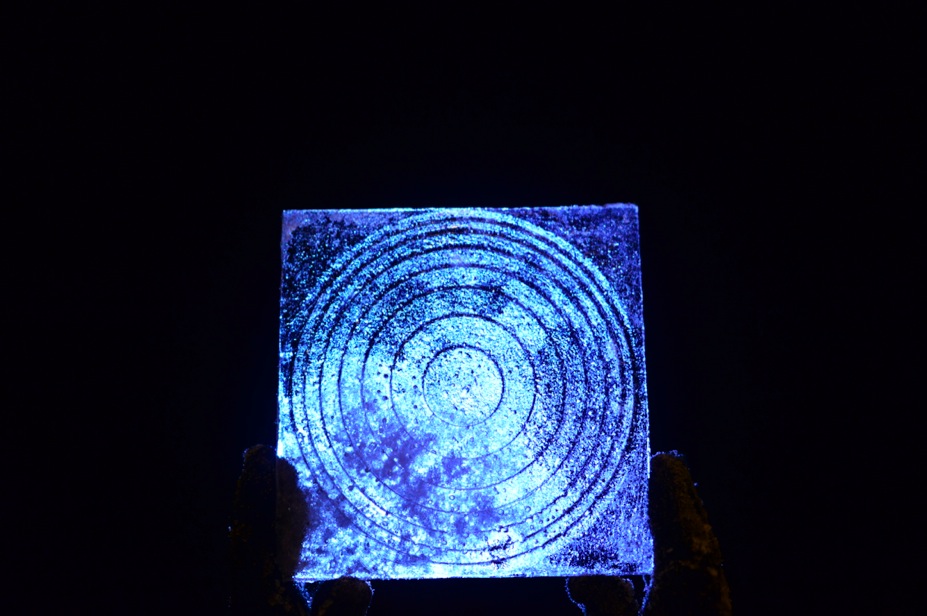

If we think about appropriate ways of construction in extreme environments it is always useful and relevant to reflect upon the vernacular. That means for the Arctic regions of our world the image of an igloo often appears in our mind. One study in particular focused on the insulation resistance of the different ice and snow tiles. The tiles are produced in different thicknesses and some of them encase different kinds of material. Using a heat source within the box, the insulation properties of the tiles can be measured with a thermometer.
The other series of studies deals with the translucency of the tiles. A light source is placed inside the box and the light intensity and quality crossing through the tile can be measured with a luxmeter.
Designing in synergy with the natural environmental conditions is an essential goal of the ice-box project.
The idea of the ice-box was to look into the potential of benefiting from ice and snow in architecture. Therefore different ice and snow plates were produced by use of a mould system. These tiles have been registered and analysed to quantify the most relevant data.
Bio Mimicry of Polar Plants,
Clemens Hochreiter


Based on the mechanisms of plants to increase the temperature in their flowers for growing their seeds in the very short reproductive periods in polar regions, this device is a reconstruction of different flower shapes. Therefore the flowers of three different on Svalbard domestic plants were researched and got translated into the technical device, aiming to evaluate which typology of flower is able generate the highest temperature within the flower. Beside a reconstruction close to the natural example modified test series with different materials got used. This should clarify if it possible to improve the microclimate within the flower shaped volumes by using transparent, translucent, light absorbing or light reflecting materials.
Every single volume got a thermometer to measure the temperature inside and outside, completely independent from the other test set-up to get comparable results.
On site the device got positioned in the open landscape of Svalbard to gather as much natural light as possible in between the steep mountains surrounding Longyearbyen.
Perception and Interpretation of the Aurora Borealis
Christopher Erdman

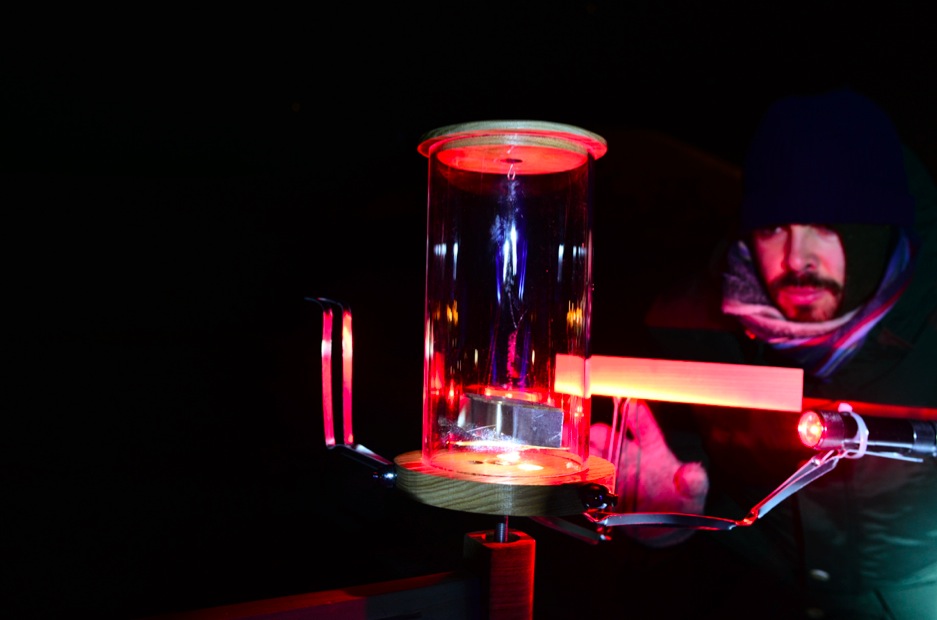
Ultimately, the project is concerned with a study of atmospheric space and spectacle.
Understanding both the visual and non-visual factors responsible for the aurora borealis and interpreting its spatial properties was the original aspiration of the project. A decision was made to broaden the data-set by combining two operating instruments into the device which would be recorded by an accompanying laptop computer.
The first instrument is a spectrometer which registers spectral information of ionizing oxygen and nitrogen molecules in the upper atmosphere responsible for the colour and altitude of the aurora borealis. The spectrometer was made by de-constructing a webcam and swapping the infra-red filter with diffraction grating, splitting the light into measurable colours.
The second instrument measures the intensity of the earth’s geo-magnetic field, which has been found to have a direct correlation with the strength and activity of the aurora borealis. This magnetometer was created by bouncing a laser off of an isolated and stabilized magnetic compass to measure the variance and fluctuations in the earth’s geo-magnetic field across an x/y axis.
Together this data paired with video and photographic recordings of the aurora could further an understanding into the processes which create the spectacle and allow the data to be interpreted to create a section cut through the aurora borealis along with a measure of its intensity in an attempt to better understand its spatial qualities.
Portable Polar Bear Alarm
David A. Garcia (tutor)



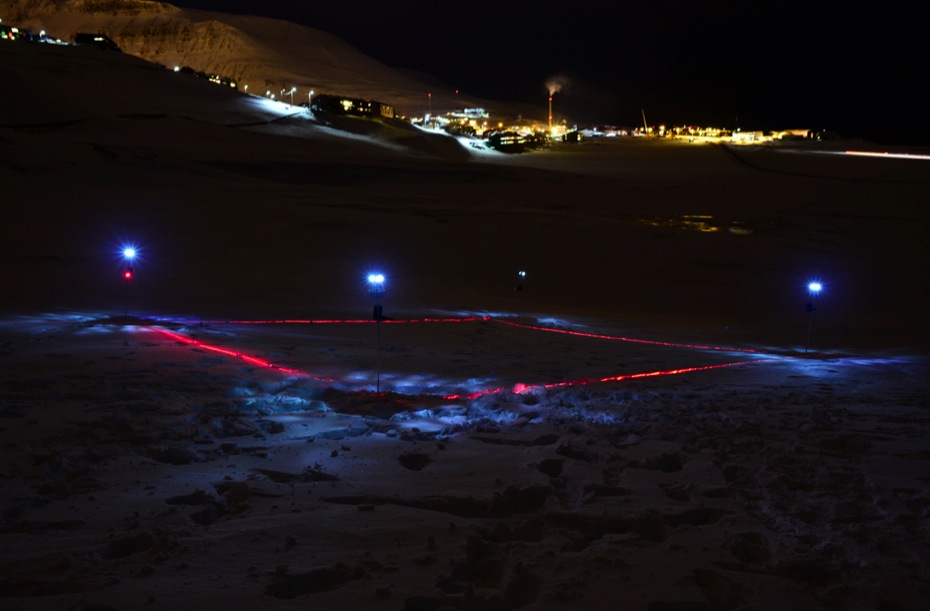
Due to the exceptional relationship between the human population of Svalbard (2500) and the polar bear population (3000), the encounter between the two species occurs often, and not necessarily in the best of circumstances.. Although the bears are protect ted by strict laws, no one is allowed outside zone 10 (urban area of Longyearbyen) with out a rifle or a guide with a rifle. This become clear when entering any public building or store, you are asked to leave your rifle or hand gun behind….they provide security lockers for this. Albeit the high security measures, when encounters occur, weather in town or out in nature, bears are owlet scared off by flares, or shots in the air. But when a polar bear has not eaten for months, their are quite determined, and on many occasions, casualties have occurred.
The proposed design allows for a “soft” perimeter alarm, not one that will stop polar bears form approaching the designed area, but allows for an acoustic or visual alarm to be triggered. more over, specially in the long dark season (6months) the laser allows for hum as to recognise the alarm, and avoid unnecessary triggers. This flexible systems creates a nomadic edge, which can be moved at will, defining the limits of safety, and the boundary between “nature” and “urban” landscape through the parameter of danger.



